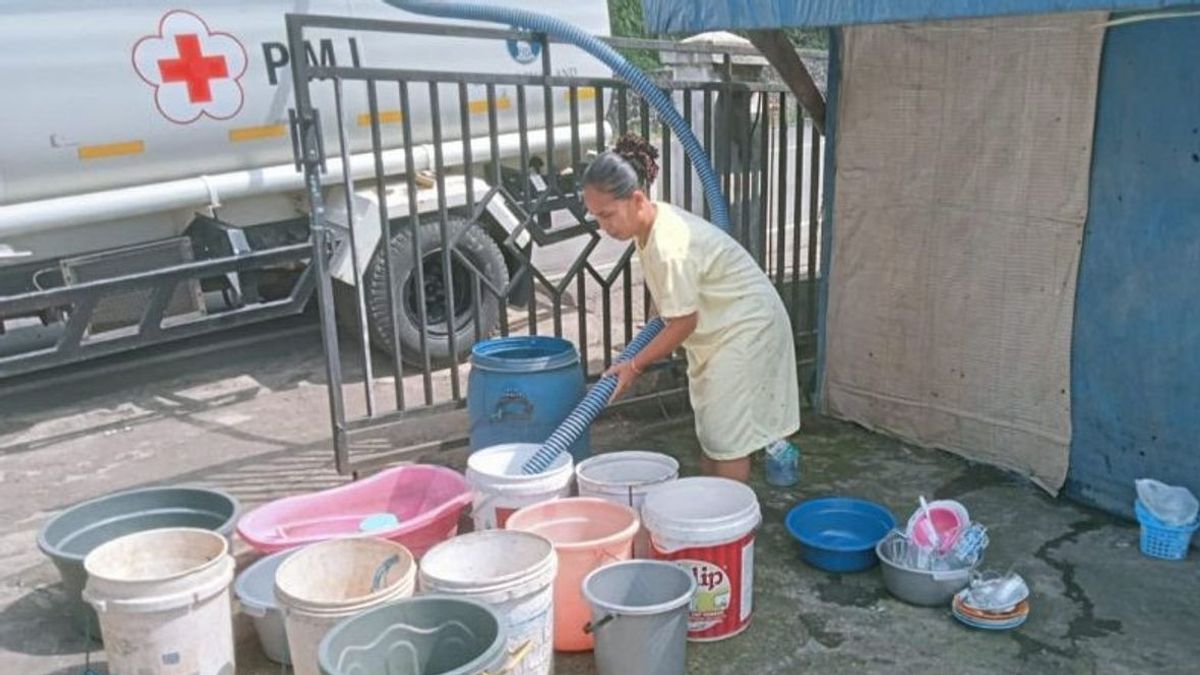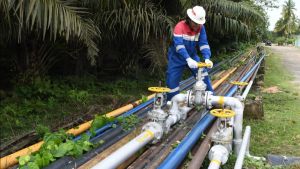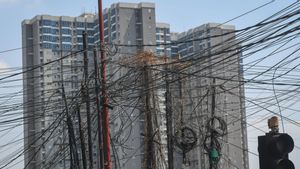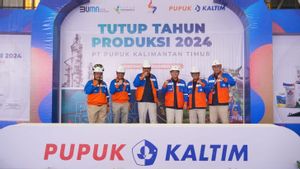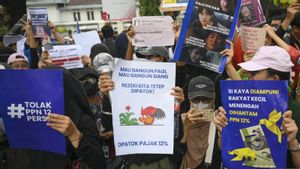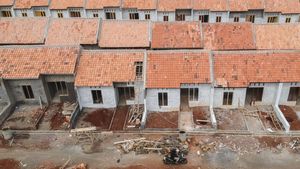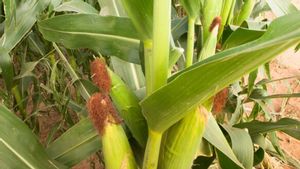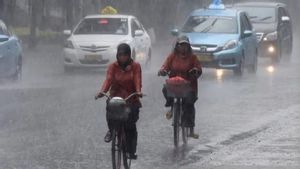JAKARTA - The Ministry of Public Works and Public Housing (PUPR) through the Directorate General (Ditjen) of Water Resources continues to take mitigation steps against the impact of drought in the 2023 dry season.
Based on the predictions of the Meteorology, Climatology and Geophysics Agency (BMKG) this year's dry season has started from March with a peak point in August-September 2023.
Expert Staff to the Minister of PUPR for Technology, Industry and Environment Endra S. Atmawidjaja said the response to drought in the dry season this year was first prioritized in meeting the needs of clean water for the community.
"After the clean water is fulfilled, the water is channeled to irrigation areas or agricultural lands," Endra said in a press release, quoted on Saturday, August 12.
For clean water consumption, the Ministry of PUPR applies three strategies. First, optimizing existing systems by taking quick/emergency steps for affected areas.
Second, building a new bore well in an area with low rainfall intensity. Finally or third, monitoring the 13 main reservoirs. "This is done to ensure that the water storage remains optimal," he said.
Endra explained, there are three quick steps to these benefits. First, carry out rehabilitation and maintenance for existing wells. Then, make arrangements (open-closes) for the floodgates in the dam and reservoir to maintain the elevation/face of the water.
"In very extreme conditions, where the water is dry and there is no groundwater basin (CAT), we are coordinating with the Cipta Karya (Directorate) and local governments to mobilize clean water with water tanks," he said.
Drought generally has an impact on meeting water needs for areas with low rainfall intensity, for example East Nusa Tenggara, West Nusa Tenggara, Bali, Maluku, South Sulawesi, and Papua.
For these areas, the Ministry of PUPR made a bore well by first examining the potential for groundwater sources.
"For this reason, the Ministry of PUPR has built 37 new bore wells spread across 19 provinces. Then, rehabilitation of 25 existing drilling wells in 11 provinces," said Endra.
Operational and maintenance activities (OP) for all existing existing wells are also carried out as an implementation of the OPOR (Operation Maintenance Optimization and Rehabilitation) program by the Ministry of PUPR. OP is carried out at 8,213 drill wells covering 5,457 wells for groundwater irrigation networks with a service area of 76,108 Ha and 2,756 groundwater wells for raw water with a capacity of 72.02 m3/second.
SEE ALSO:
In addition to the construction of bore wells, to meet the community's clean water needs, the Ministry of PUPR has also optimized the function of water storage for dams, ponds, reservoirs, and lakes. Currently monitoring is being carried out on the condition of 13 main reservoirs, namely Jatiluhur, Jatigede, Kedung Ombo, Batu Tegi, Wadas Lintang, Wonogiri, Karang Kates, Bili Bili, Wonorejo, Paselloreng, Bintang Bano, Kalola, and Tapin.
As of August 6, 2023, the volume of water availability from the 13 main reservoirs was 3.73 billion cubic meters from an effective reservoir of 5.52 billion cubic meters. The area that can be served from the entire dam is 568,074 hectares (ha) out of a total of 572,485 ha.
In the future, the Ministry of PUPR will also continue to complete 13 advanced dams (on going) in 2023.
Overall, the water capacity that can be accommodated by dams, reservoirs, and lakes in Indonesia is 28.43 billion cubic meters, namely from 223 dams as much as 6.73 billion cubic meters, from 3,464 reservoirs as much as 262.89 million cubic meters, and from 114 lakes can accommodate water as much as 21.84 billion cubic meters.
Furthermore, said Endra, to anticipate agricultural land drought, the Ministry of PUPR has structurally rehabilitated an irrigation network of 412,541 ha. There is also operational and maintenance work (OP) for irrigation areas of 3 million ha and OP 923 rivers.
"Agriculture, which has an impact on water shortages in the 2023 dry season, is generally experienced in rain fields, and technical irrigation fields from dams that depend on river water discharge," he added.
This year, the Ministry of PUPR has also allocated revitalization and management activities for 15 priority lakes, operations and maintenance of 1,338 reservoirs and 317 lakes, as well as 1,241 groundwater and raw water maintenance operations, with details of 143 groundwater wells, 517 raw water points, and 581 groundwater irrigation points.
The English, Chinese, Japanese, Arabic, and French versions are automatically generated by the AI. So there may still be inaccuracies in translating, please always see Indonesian as our main language. (system supported by DigitalSiber.id)
